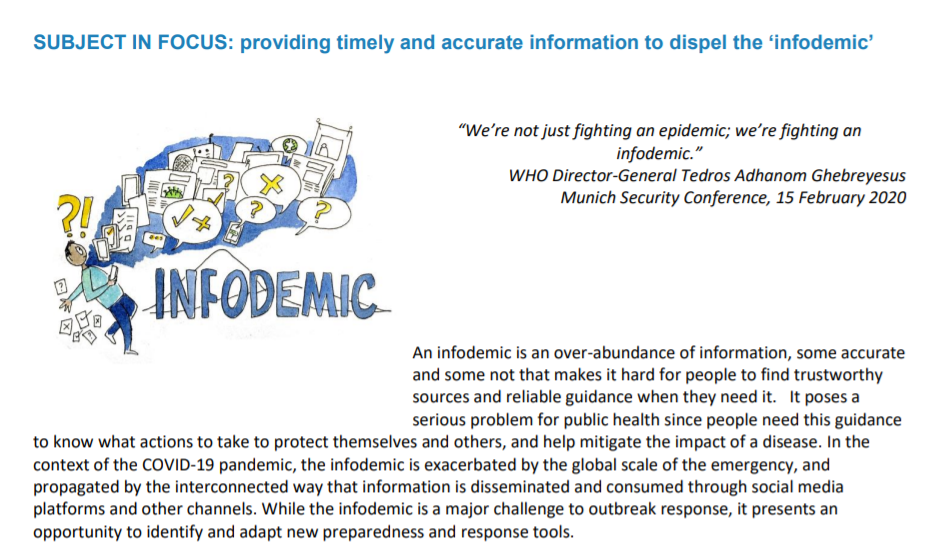信息时代的新产物, infodemic,信息流行病?
COVID-19 Situation Report-86 2020.4.15

https://www.who.int/teams/risk-communication/infodemic-management
In epidemics and pandemics, WHO is fighting a second “disease”; an infodemic – an over-abundance of information – some accurate and some not – that makes it hard for people to find trustworthy sources and reliable guidance when they need it.
The infodemic spans four major thematic areas where people look for trustworthy information and where misinformation and rumors are placed.
- The cause of the disease: How did it emerge and what is the reason?
- The illness: what are the symptoms and how it is transmitted?
- The treatment: How can it be cured?
- The interventions: what is being done by health authorities or other institutions?
Due to the high demand for timely and trustworthy information about COVID-19, the World Health Organization (WHO) has established the Information Network for Epidemics (EPI-WIN) that unites technical and social media teams working closely to track and respond to misinformation, myths and rumours and provide tailored information and evidence for action.
EPI-WIN covers four strategic areas of work to respond to the infodemic (I-S-A-Q)
- Identify: Through WHO’s scientific and partners network, realtime-evidence is gathered, appraised and assessed for relevance to help form recommendations and policies that have an impact on the health of individuals and populations
- Simplify: This knowledge is translated into actionable and behavioral change messages. This includes the myth buster series, WHO “How to” and training videos, Frequently-Asked-Questions, Weekly information and evidence slide-set for health representatives. WHO uses different communication channels to push out and place content at the right place so it can be found.
- Amplify: WHO reaches out and dialogues with key stakeholders to understand concerns and information needs to tailor advise and messages and help these stakeholders to address the audience they represent. Through this process stakeholders amplify the right public health message in way that is more user-friendly and lead to behavioral change. Active engagement calls and dialogue are established for travel and tourism sector, food and agriculture sector, faith-based organization, health care and medical professions associations, media/journalists as well as to public health decision-makers are a few to mention.
- Quantify: Social media technology platforms are an amplifier and observatory of information – right and wrong. Through strategic partnerships, these platforms place relevant information and WHO advise in the viewpoint of consumers, as well as help WHO to track, monitor and quantify the infodemic. There is a wealth of information on these platforms that help to understand sentiments in population and guide effectiveness of public health measures.
未经允许不得转载:慧康网 » Infodemic management – Infodemiology-20200417



